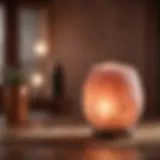Exploring the Future Through Tarot: Insights and Interpretations
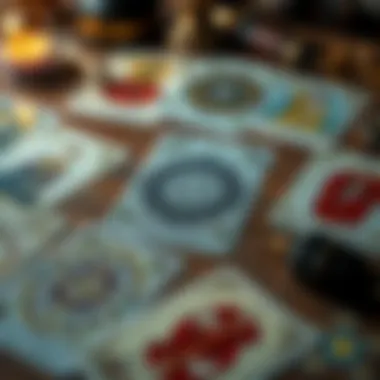
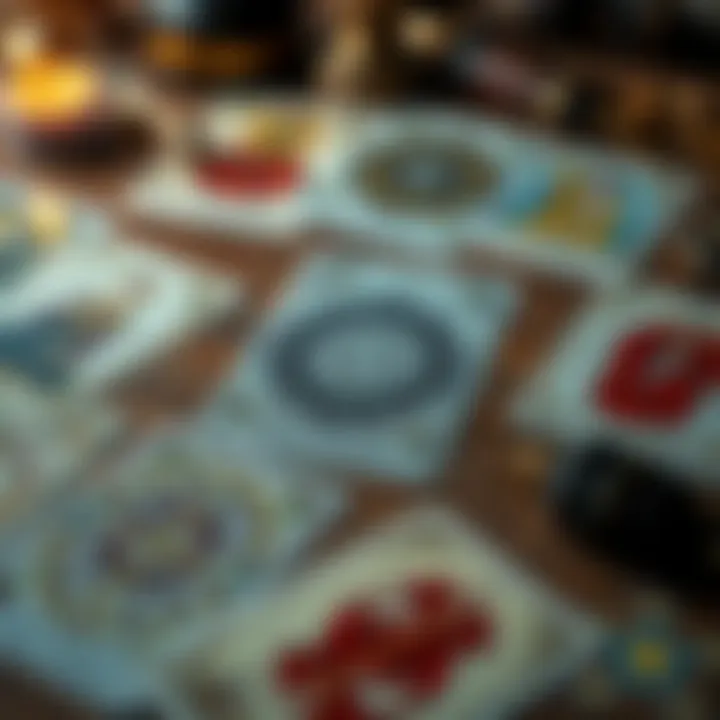
Foreword
As society continues to navigate the complexities of the modern world, many individuals seek avenues for understanding and predicting their future. Tarot cards, known for their rich history and mystique, serve as a tool for self-reflection and insight. They reflect a blend of mysticism with psychological exploration, providing not just predictions but opportunities for personal growth. By examining the evolution of tarot, from its origins to its contemporary adaptations, we can begin to grasp the multifaceted role tarot plays in our understanding of potential pathways.
Historical Context of Tarot
The roots of tarot trace back to 15th century Europe, with initial use as a playing card game. Over time, these cards morphed into tools of divination. The tarot deck, as we know it today, typically consists of 78 cards divided into the Major and Minor Arcana, each rich with symbolic meaning. The images on these cards are not mere illustrations; they convey layers of meaning that resonate with the universe's narrative.
The Major Arcana cards, such as The Fool and The Lovers, tell of life's big themes and significant life lessons. In contrast, the Minor Arcana cards cover everyday situations and interactions. This duality in tarot creates a comprehensive dialogue between cosmic tendencies and daily life, enabling individuals to uncover deeper truths about their current circumstances.
Contemporary Applications
In the here and now, tarot readings have taken on various forms, from casual sessions among friends to more structured interpretations sought by those yearning for direction. Enthusiasts advocate for tarot as a tool for introspection, revealing subconscious thoughts and feelings. Modern tarot readers often include intuitive practices alongside standard interpretations, enhancing the experience significantly.
Today, tarot is frequently meshed with personal growth strategies; it can act as a companion in a person's journey to better mental health. Here are some common modern usages of tarot:
- Self-Reflection: Using tarot to reflect on choices, decisions, and life paths.
- Goal Setting: Identifying personal objectives and potential obstacles.
- Therapeutic Exploration: Aiding in discussions during counseling or therapy sessions.
Creating Your Own Tarot Practice
Embarking on a tarot journey requires openness and patience. To create a meaningful practice, follow these steps:
- Choose Your Deck: Spend time finding a deck that resonates with you. Each deck has unique artwork and feeling.
- Understand Basic Meanings: Familiarize yourself with fundamental interpretations of the cards.
- Develop Intuition: Pay attention to your gut feelings while reading the cards.
- Experiment with Spreads: Start with simple three-card spreads for daily readings.
"The tarot is a vehicle for exploring the intricate landscape of the self, transforming the unknown into the known."
Closure
The allure of tarot lies not just in its capacity to offer glimpses of the future but also in its ability to facilitate self-understanding. By exploring its historical roots and modern applications, individuals can appreciate tarot as a pathway towards greater self-awareness and personal development. As one grows more familiar with tarot, it can serve as a source of empowerment, guiding individuals through life’s twist and turns with a clearer sense of purpose.
Understanding Tarot: A Brief Overview
Tarot has long been seen as a tool for introspection and understanding one’s life circumstances. At its core, the study of tarot serves not just as a means to predict the future but as a rich framework to gain insights into the mind’s workings. By grasping the fundamental aspects of tarot, individuals can better navigate their personal journeys, explore life’s uncertainties, and even confront challenges in more insightful ways.
The blend of artistry and symbolism makes tarot an engaging practice that resonates many. As the reader engages with the cards, they ultimately translate intricate visual messages into applicable wisdom. This aspect of translation encourages a deeper connection between the intuitive self and rational thinking, aptly balancing emotions with logical processing.
Understanding tarot invites individuals into a reflective space where decisions can be examined with various perspectives. It's not merely about flipping cards; it's about fostering awareness that extends beyond the reading itself. The value of learning about tarot lies in its ability to promote clearer decision-making, cultivate emotional intelligence, and guide individuals toward a balanced state of mind.
Throughout this article, we will delve into the rich history, structure, and symbolism of tarot, each facet enriching the understanding of its purpose and relevance today. By illuminating how tarot interacts with intuition, individual agency, and psychological insights, readers can expect to gain a deeper appreciation of this ancient practice and its modern-day applications.
“Tarot offers us a way to tap into the subconscious—revealing sentiments and thoughts that usually hide in the shadows.”
Historical Origins of Tarot
The roots of tarot are often traced back to 15th-century Europe, particularly Italy, where it was originally utilized as a card game. However, its evolution took a mystical turn in the 18th century when it began to be associated with occult and esoteric knowledge. Various cultures, including Egyptian and Kabbalistic traditions, were intermingled with tarot usage, establishing a historical backdrop that adds depth to its interpretation.
The transformation from a simple card game into a rich symbolic representation of life stages and human experiences demonstrates the adaptability of tarot. Its aesthetic beauty also attracted artists, adding layers of interpretation that continued to grow with societal shifts.
The Structure of Tarot Decks
Tarot decks, while varied in artistic style and interpretation, maintain a consistent structure that allows for profound exploration of human experiences. Understanding this structure is pivotal for anyone looking to engage meaningfully with tarot.
Major Arcana
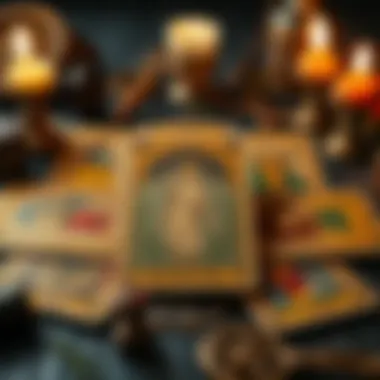
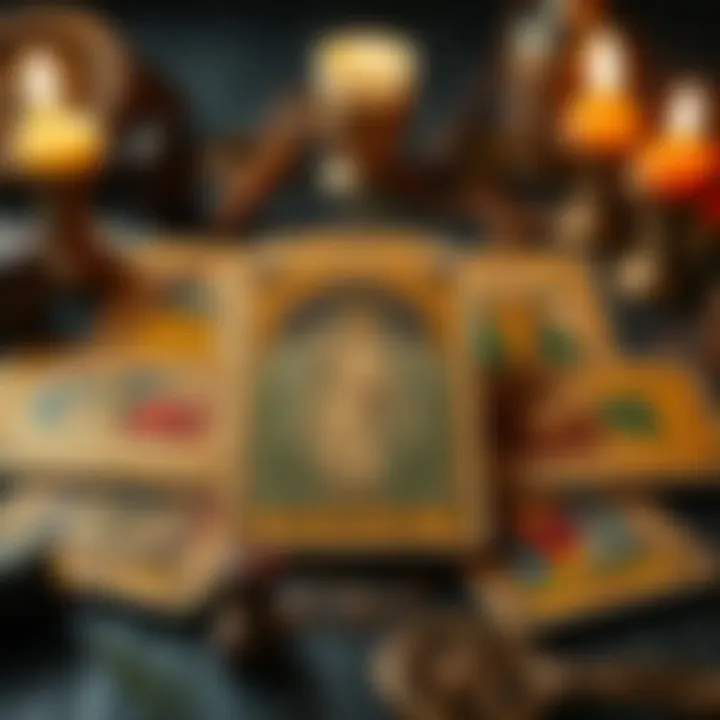
The Major Arcana consists of 22 cards that represent significant life themes and powerful arcs of personal journeys. Each card carries deep symbolism and represents major life events, spiritual lessons, and archetypal energies that shape our paths. One key characteristic of the Major Arcana is its ability to prompt reflections on transformative moments in life, such as the Fool representing new beginnings or the Tower indicating sudden upheavals.
This aspect makes it a beneficial choice for exploration in this article, as these cards can often serve as anchors for readings, allowing individuals to engage with life's most pressing questions on a profound level. The unique feature of the Major Arcana is its capacity to encapsulate universal human experiences, offering insights that resonate across individual circumstances.
Minor Arcana
The Minor Arcana comprises 56 cards divided into four suits: Cups, Swords, Wands, and Pentacles. These cards are more focused on everyday experiences and circumstances that shape daily life. Each suit addresses different areas such as emotions, thoughts, actions, and material possessions, adding significant detail to the reading processes.
The Minor Arcana’s key characteristic lies in its representation of daily events and feelings, making it incredibly beneficial for practical guidance. It illuminates challenges and offers advice for situations we might encounter frequently, balancing out the broader themes presented in the Major Arcana. The unique feature of the Minor Arcana is its ability to provide day-to-day insights, which when combined with Major Arcana reflections, creates a holistic reading experience.
Symbolism in Tarot Cards
The symbolism within tarot cards operates on multiple levels, weaving together personal interpretations and cultural references. Each image invites the reader to derive meaning, reflecting their current state or future possibilities. The use of vivid imagery and archetypal motifs ensures that these cards transcend mere divination; they become a dialogue between the self and the universe. Understanding this symbolism is crucial for anyone looking to unlock the deeper meanings within their tarot readings.
How Tarot Works
Understanding how tarot operates is critical for anyone seeking clarity and insight through this ancient practice. The mechanics of tarot readings serve as the backbone, allowing individuals to glean knowledge about their lives. This section aims to demystify the process while emphasizing how the selection of cards, intuition, and various layouts contribute to deeper meanings.
Mechanics of a Tarot Reading
Card Selection Process
The card selection process stands as a central pillar of any tarot reading. This stage can vary widely, from shuffling cards and drawing them randomly to more intentional methods where the practitioner seeks specific insights. A well-known method involves the querent (the person seeking guidance) shuffling the deck while focusing on their question. This act of engagement generally fosters an energetic connection between the querent and the cards.
Choosing this method allows the reading to reflect personal issues and circumstances, making it a popular choice. Each card drawn carries its own significance, helping to paint a picture of the situation at hand. A unique feature of the card selection process is that it can be tailored to individual preferences; some may prefer traditional shuffling, while others might use an electronic tarot app, which can produce the same insights with due accuracy. This adaptability helps maintain a broad appeal across different demographics.
However, reliance on random selection can have downsides. Not everyone connects with the randomness of the shuffling process, leading to skepticism about the cards' relevance. The selection process becomes crucial as it sets the tone for the entire reading, guiding the querent towards potential insights.
Interpreting Card Meanings
Interpreting card meanings adds layers of depth to a tarot reading. Each card carries a range of interpretations based on position, context, and surrounding cards. It's not merely about reading the card in isolation; its relevance changes based on how it interacts with others in the spread.
The complexity lies in the key characteristic of fluidity—the way meanings can shift based on personal experiences and emotional states. For this article, understanding this aspect is vital as it showcases how tarot can be both a personalized experience and an expansive tool. While the card meanings can be documented in books, a reader also draws upon their intuition to derive a nuanced understanding during the reading.
Interestingly, this duality means that while there are standardized interpretations, each reader brings their own perspectives. Some may find that relying too much on traditional meanings limits their intuitive grasp of the cards. Nonetheless, this diverse prism of interpretations can enrich the experience, making it relevant and helpful.
The Role of Intuition
Intuition in tarot reading cannot be ignored. Great readings often stem from a blend of gathered knowledge and intuition. It allows the reader to tap into underlying energies that the cards may reveal. Skilled readers may describe it as an instinctive understanding; they
Tarot and Future Insights
Tarot isn’t just a deck of cards. It serves as a mirror reflecting the complexities of our lives, particularly when it comes to the future. The section on Tarot and Future Insights delves into the valuable role tarot plays in enhancing our understanding of life's unpredictable twists and turns. By interpreting the cards, readers can uncover clarity around life decisions and visualize paths that may be obscured by immediate uncertainties. The multifaceted insights gained from tarot readings can empower individuals to approach their futures with more confidence.
Gaining Clarity on Life Choices
Life is replete with choices that can swirl around like leaves caught in a whirlwind. Often, it’s tough to see which direction to take. This is where tarot steps up, offering a semblance of clarity amid chaos. By engaging with specific cards, individuals can explore their options more thoughtfully. For example, a card drawn from the Major Arcana, like The Empress, could signify a nurturing and fertile period, indicating that it may be a good time to pursue projects focused on growth or creativity.
Consider the Three-Card Spread: this simple layout allows one to view the past, present, and future in a flash. When reflecting on decisions—be it switching careers or contemplating a move—it illustrates potential roadblocks and opportunities. This newfound clarity doesn’t just help in making informed choices; it also fosters a sense of agency over life’s trajectory.
Anticipating Possible Outcomes
The future is often a foggy landscape where it’s easy to meander aimlessly. Tarot acts like a compass, shedding light on potential outcomes based on the current trajectory of a person’s choices. Each card possesses a unique significance, and their arrangement can hint at varied possibilities.
For instance, drawing the Wheel of Fortune suggests that change is imminent, reminding us that circumstances are often outside our control. Conversely, the Chariot card might convey determination, implying that success is achieved through discipline and willpower. When a reader utilizes a layout like the Celtic Cross Spread, they uncover a broader narrative, which might help to refine expectations and prepare for various possibilities, preparing them mentally and emotionally.
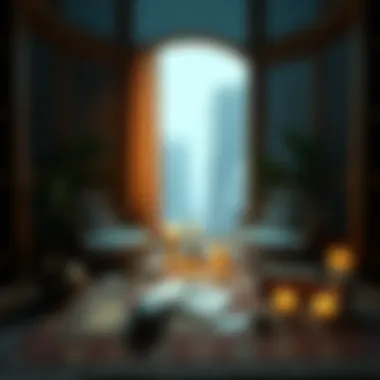

Anticipating outcomes isn’t about predicting a fixed future but about understanding trends and tendencies that can be influenced. This awareness often cultivates resilience, enabling individuals to adapt more effectively when navigating life's challenges.
Identifying Patterns and Influences
Life is a tapestry of experiences, where past events often reveal patterns that inform present and future circumstances. Tarot is adept at highlighting these recurring themes, unveiling the threads that connect disparate experiences. By examining a series of readings over time, individuals can start to identify patterns, such as recurring cards or similar layouts, signifying ongoing themes in their lives.
Furthermore, understanding influences—whether from relationships, work, or inner conflicts—can help seekers navigate their environment with intention. For example, the presence of The Lovers card might indicate pivotal decisions concerning partnerships, while cards like The Tower could signify disruption that prompts change.
In recognizing these patterns, individuals can better align their actions with their core values. Tarot encourages a reflective approach, promoting self-awareness and potentially unveiling deeper truths about one’s motivations.
"Tarot serves as a guiding light, helping individuals shine a flashlight on potential pathways and the forces at play in their lives."
In essence, tarot can be an invaluable tool for navigating the uncertainties that lie ahead. By gaining clarity on decisions, anticipating various outcomes, and identifying patterns, one can step forward into the unknown with a strengthened sense of purpose.
Psychological Aspects of Tarot Readings
Tarot readings reach beyond simple fortune-telling; they delve into the psyche, offering valuable insights that can foster both self-discovery and personal growth. Within this section, we will discuss how tarot serves as a reflective tool, enhances self-awareness, and the therapeutic benefits that can emerge from engaging with one’s own narrative through the cards.
Tarot as a Reflective Tool
The table set for a tarot reading is more than just a collection of cards; it becomes a mirror reflecting the inner thoughts and emotions of the individual. Through the imagery and symbolism present in tarot cards, one can surface feelings or concerns that may not be front and center in daily life. The act of interpreting cards compels individuals to look at their situations from various angles, prompting reflections on decisions and experiences. This introspective process is invaluable. It nudges people to confront aspects of themselves they might typically brush aside.
A popular image is that of the Two of Swords—the figure often depicted blindfolded with two crossed swords. This imagery can prompt the question, “What choices in my life am I avoiding?” Such questions can lead to deeper realizations and pave the way for problem-solving.
Enhancing Self-Awareness
Engaging in tarot readings can significantly elevate one’s self-awareness, which is crucial in today's fast-paced and often overwhelming environment. By examining the roles of different cards in contexts such as relationships, career, or health, the reader is invited to scrutinize their motivations, fears, and aspirations.
Here’s how tarot fosters self-awareness:
- Card Interpretation: Each card brings unique meanings and relevance. Let's take The Hermit as an example; it encourages introspection and solitude, prompting an individual to reflect on their own need for space and clarity.
- Themes Emergence: Over time, patterns and recurring themes may arise. For instance, if one continually pulls cards related to the Seven of Cups, an endless choice of possibilities, this may reveal their struggle with indecision in life.
- Broadening Perspectives: This practice does not just bring to light personal issues but helps sort thoughts. It can open the mind to different paths and approaches, which can be essential for someone feeling stuck.
Therapeutic Benefits of Tarot
The therapeutic benefits of tarot readings cannot be overstated. Much like journaling or engaging in creative outlets, tarot offers a structured way to explore thoughts and feelings. Here are some key benefits:
- Emotional Release: The process of discussing and interpreting cards often leads to catharsis. This release can prove beneficial for emotional wounds that might be festering.
- Decision-Making Aid: Tarot doesn’t dictate decisions but frames them. It helps individuals articulate their choices and uncertainties, adding clarity and context to the process of decision-making.
- Adaptive Coping Mechanism: For some, engaging with tarot can become a coping mechanism during stressful times, creating a sense of control over otherwise chaotic emotions.
Practical Considerations in Tarot Readings
When delving into the world of tarot, thoughtful preparation enriches the experience, making it potentially transformational. The practice of tarot is not merely about card readings; it's also about understanding oneself, setting the right environment, and approaching the cards with an open mind and clear intention. Practical considerations serve as the foundation for meaningful readings.
Choosing a Reader vs. Self-Reading
One of the primary questions you might ponder is whether to seek the guidance of an experienced tarot reader or embark on the journey of self-reading. Choosing the right approach hinges on several factors, including your comfort level with the cards and your personal objectives.
If you opt for a reader, consider their experience level and areas of expertise. You might look for someone with a strong track record, perhaps with testimonials or recommendations. Engaging with a skilled tarot reader often opens avenues for discovering insights you might overlook when reading for yourself. On the flip side, self-reading can be profoundly educational. It allows you to develop a personal relationship with your deck and enhances your intuition. With self-reading, you're the captain of your own ship. This means you guide your exploration without external influence.
One potent way to discern what suits you is to try both methods. Start with a professional reading for foundational insights, and then experiment with self-reading to refine your skills. Both paths offer unique perspectives and reveal different layers of understanding.
Setting Intentions for Readings
Setting intentions is crucial when it comes to tarot readings. A clear intention focuses your energy, guiding the reading towards your particular queries or concerns. Without this clarity, the reading can become a jumbled mess, lacking direction and meaning.
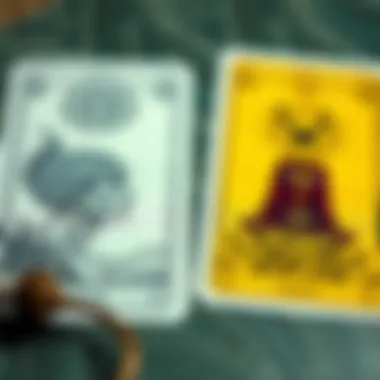
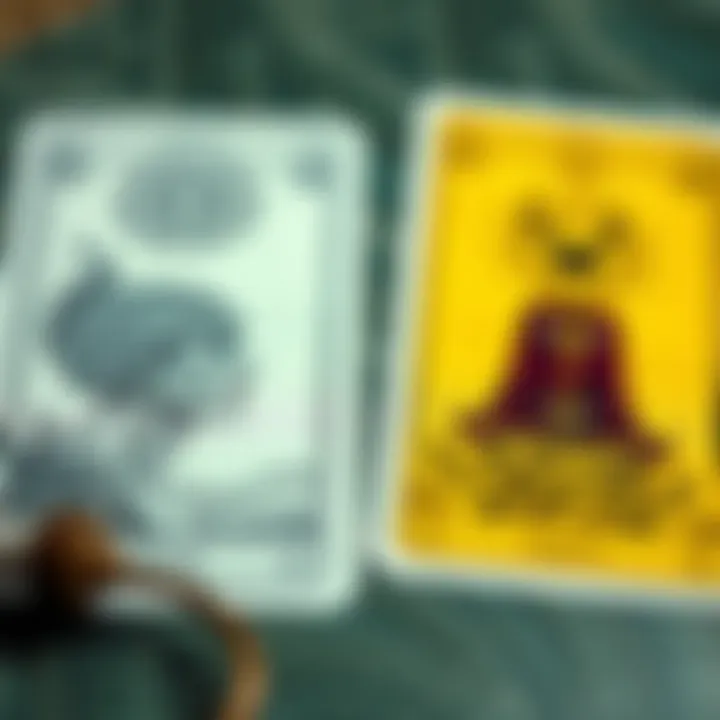
To set an intention, you might begin by reflecting on what you truly wish to understand or resolve. Ask yourself probing questions like:
- What area of my life needs the most attention right now?
- Am I seeking clarity on a personal relationship, career choice, or health decision?
- What challenges am I facing, and how can the cards reflect potential solutions?
Once you identify your intention, communicate it silently or aloud before beginning your reading. Some people even write it down or hold it in their minds as they shuffle the cards. This step cultivates a deeper connection with the tarot, allowing the cards to resonate more profoundly with your inquiries.
Ethical Considerations in Tarot
With power comes responsibility. Ethical considerations in tarot readings are vital, as they ensure respect and integrity in the practice. Both readers and individuals receiving readings must approach this work with mindfulness.
For readers, maintaining confidentiality is paramount. Respecting clients’ privacy builds trust, paving the way for honest dialogue and revelations. Furthermore, avoid making definitive predictions. Instead, present insights that guide rather than dictate decisions. Words have weight; therefore, care should be taken to offer advice that empowers clients, encouraging personal agency.
For those seeking a reading, there are responsibilities too. Approach the process with an open heart and mind, ready to absorb insights, yet discern what's applicable to your life. Avoid placing undue weight on predictions regarding serious matters, like health or legal situations; these are complex and best left to the appropriate professionals.
Ultimately, ethical considerations foster a sustainable practice, allowing tarot to be a tool for growth and clarity, rather than a source of fear or uncertainty. Returning to the essence of the tarot’s purpose—self-discovery—can lead to illuminating discoveries that resonate in the long run.
Tarot is a mirror that reflects our inner landscape; how we engage with it shapes our journey forward.
Case Studies and Personal Narratives
Exploring case studies and personal narratives in the realm of tarot reveals their crucial role in understanding the practical applications and implications of this ancient practice. Through real-life experiences, individuals who have engaged in tarot readings often provide insights that are not only relatable but also paint a vivid picture of the transformative effects tarot can have. These anecdotes can be compared to breadcrumbs that lead others along the path of self-discovery, offering both guidance and inspiration.
One of the major benefits of including personal narratives is the ability to highlight the subjective nature of tarot interpretations. Each person's journey with tarot is unique; what resonates for one individual may not hold the same significance for another. Therefore, these stories serve as valuable case studies that demonstrate the diverse ways tarot can inform decisions, navigate life's challenges, and enhance self-awareness.
When considering case studies, it's essential to focus on specific elements such as the context of the readings, the questions posed, and the outcomes experienced by individuals. These factors not only provide a deeper understanding of the readings themselves, but they also stress the varying responses to tarot insights. This can make for a richer, more nuanced exploration of tarot's benefits while allowing readers to connect with the material on an emotional level.
Each narrative adds another layer, revealing how tarot has woven itself into the fabric of different lives. They can also introduce valuable lessons and encourage critical thinking about the beliefs surrounding tarot. As helpful as they are, caution is needed: not every story will resonate or accurately reflect the tarot experience. Keeping a balanced view when examining such narratives is key to promoting a well-informed understanding.
Success Stories: Navigating Challenges
Diving into the narrative of success stories illustrates how tarot has been a beacon for those grappling with uncertainty. It’s not uncommon for individuals facing a pivotal moment to turn to tarot as a means of gaining perspective, especially when the road ahead is fraught with ambiguity.
For instance, consider someone at a career crossroads. Struggling between two enticing job offers, they might consult their tarot deck. Each card drawn could illuminate distinct elements of their situation, shedding light on aspects like personal values, potential disappointments, or fulfilling paths. By reflecting on these insights, individuals often find the clarity needed to make decisive moves, effectively navigating their challenges with newfound resolve.
!> "Success in tarot isn’t necessarily about flipping cards for predictions. It’s about the reflection and the choices you find within those cards."
Moreover, success stories can showcase a range of outcomes—whether it's finding love after a long drought, deciding to move across the country, or simply understanding oneself better. These experiences validate the notion that tarot can act as more than a mystical practice; it can serve as a pragmatic tool that provides guidance through life’s labyrinth.
Lessons Learned from Readings
Examining lessons learned from tarot readings can be likened to sifting through gold dust; it uncovers precious perspectives that enrich our understanding of the practice. Often, at the heart of these lessons is a recognition of patterns—both personal and universal—that inform better decision-making.
One key takeaway from the narratives often shared is the importance of patience. For many, tarot readings highlight the beauty of timing, emphasizing that decisions should align with one’s inner rhythm rather than societal pressures. Many stories recount how clients learned to trust their intuition more, recognizing moments to wait rather than act impulsively. This not only enhances their relationship with tarot but also enriches their daily lives.
Another common lesson surrounds the need for self-compassion. Tarot often brings up elements of self-reflection that challenge individuals to confront what is often hard to accept. Through narratives that expose vulnerabilities, readers can learn that their struggles are not isolated, helping foster a sense of community and understanding among those exploring their own paths through tarot.
Ultimately, these narratives not only serve to document personal journeys but also build bridges between the esoteric and the practical. They challenge us to think critically, opening avenues for rich conversation and deeper contemplation of the tarot’s role in shaping our future.
For further insights, consider exploring resources like Wikipedia on Tarot, and discussions on Reddit for personal stories and communal experiences.
The Future of Tarot
The future of tarot is increasingly relevant in today's fast-paced digital landscape. Far from an ancient artifact, tarot is blossoming anew, capturing the interest of a modern audience that seeks insight and connection in an often chaotic world. This section delves into the shifting dynamics of tarot as it embraces technology, evolves in its practices, and intertwines with various forms of holistic modalities.
Tarot in the Digital Age
The rise of technology has ushered in a tidal wave of change in how tarot is accessed and interpreted. No longer confined to dusty old shops or private appointments, tarot readings are now available through apps, online platforms, and virtual consultations. These advancements make tarot more accessible than ever.
Key Considerations:
- Accessibility: With just a few clicks, anyone can find a reader or explore online tarot resources. These platforms often offer instant readings, which appeal to a younger audience seeking quick insights.
- Community: Digital spaces foster communities of like-minded individuals who share their experiences and interpretations, providing a collective knowledge pool that enhances understanding.
- Innovative Formats: With multimedia integration, tarot findings can now be accompanied by information in different formats, boosting engagement through videos and interactive content.
